Last updated on April 4th, 2024
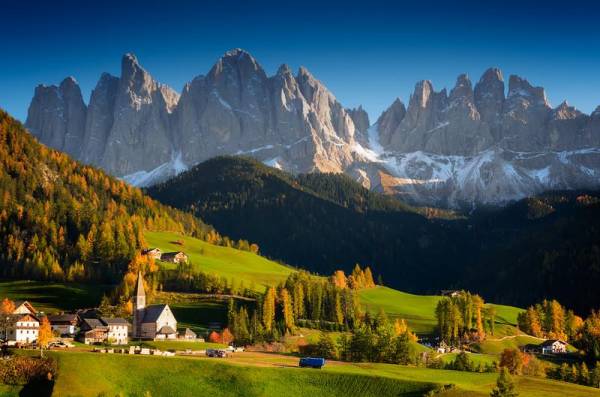
St Magdalena, Val di Funes, © Can Stock / pljvv
Visit the Dolomites – Italian, German and Ladin
When you visit the Dolomites, every place has names in Italian, German and Ladin. Every hike has a lodge called a rifugio and also called a hutte. At first it might be hard to get your head around the fact that Rifugio Firenze is exactly the same place as the Regensburgerhütte or that Alpe di Siusi is exactly the same meadow as Seiser Alm. Before you know it though, you will be using English, Italian and German in the same sentence without confusing anyone.
Visit the Dolomites – Val Gardena
Val Gardena (Gardena Valley) is one of the most popular spots in the Dolomites. The Gardena Valley is only a few miles off the Great Road over the Sella Pass. Chairlifts and gondolas along the valley floor reach up the slopes on either side of the valley at towns such as Ortisei, Santa Cristina and Selva. From Ortesei a gondola also reaches the Alpe di Siusi plateau, which provides an option to return through Kastelruth. The Gardena Valley bus system connects you to all the lifts at Kastelruth, Ortisei, Santa Cristina and Selva di Val Gardena, so it’s easy to get around without a car.
Another popular gondola circuit is from Ortisei / Seceda / Col Raiser / Santa Cristina or vice versa and then bus between the two towns. You will find more than 20 gondolas to try in Val Gardena. Hike the flat, narrow Vallunga Valley (UNESCO) at Selva di Val Gardena. Try the Resciesa Funicular in Ortisei and then hike to Rifugio Malga Brogles in Val di Funes. Take the Dantercepies gondola from Selva di Gardena up to Passo Gardena. From Passo Gardena you can switch to the Alta Badia valley gondola system and ride down to Colfosco and Corvara. Also, don’t miss the “Coffin Gondola” at Passo Sella, where attendants toss two people into a non-stop standing-room-only gondola and lock you in for the trip up to Forcella del Sassolungo.
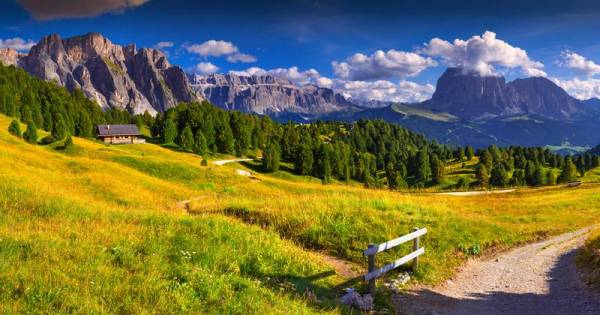
Val Gardena, © Can Stock / jojjik
Visit the Dolomites – Alpe di Siusi
Kastelruth is a small village south of Ortisei that offers a couple other ways to get to the Alpe di Siusi plateau. Bus service from Kastelruth takes you on Route 10 directly to Compatsch on the Alpe di Siusi (Seiser Alm). Alternately, head the opposite direction on Route 10 to nearby Siusi (Seis) and catch the Alpe di Siusi Cable Car to Compatsch.
On the plateau there are hiking trails and two shuttle bus routes to numerous chair lifts and gondolas into the surrounding mountains. From Compatsch, the Almbus Route 11 bus travels to Saltria and Route 14 goes to Piz. There is also a chairlift at Piz beside the Sporthotel Sonne, which connects riders to a cable car down off the plateau to Ortisei in the Gardena Valley. So, you can use buses and gondolas to complete a full circuit that includes both Kastelruth and Ortisei on your visit to Alpe di Siusi.
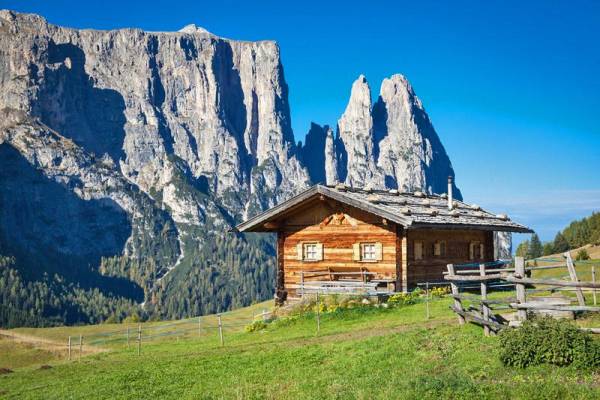
Schlern, Seiser Alm, © Can Stock. / hardyuno
Val di Fassa (Fassa Valley)
The Val di Fassa meets Val Gardena at the Sella Pass and is part of the Great Dolomite Road. There are several towns in the valley and an extensive series of chairlifts and gondolas. The best known town is Canazei where you can catch the Pecol / Col dei Rossi gondolas to Belvedere. The nearby gondola at Pordoi Pass is a favorite of tourists for its summit views. You can also hike the Viel del Pan from Pordoi to the base of Marmolada. South of Canazei, the village of Vigo di Fassa is a popular spot to catch a gondola into the Catinaccio group.
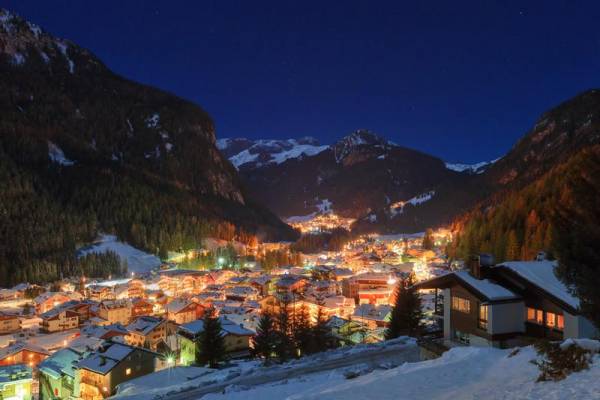
Canazei at Night, © Can Stock Photo / serditova
Cortina d’Ampezzo
Cortina d’Ampezzo is at the eastern end of the Great Dolomite Road. This city is often referred to as Cortina. A rental car from Venice is the best way to reach Cortina d’Ampezzo, as there are no trains and only small local buses over the route. The Cortina d’Ampezzo region was taken over from Austria by Italy in World War I. Cortina became well known in 1956 as the host of the Olympics. The Winter Olympics will return there in 2026.
The small pedestrian area in Cortina d’Ampezzo is a great central location for day trips. The gondola to Faloria and the spectacular 3 gondola ride to Tofana both start in the heart of the village. The Tofana gondola goes from Freccia Nel Cielo to Col Druscie to Ra Valles and then Cima Tofana. There’s a stairway at the final gondola station. The view looks fabulous. Also consider hiking to Ristorante da Bepi al Lago Ghedina on your day trip to Tofana.
Cortina is also a great starting point for day trips to Lago di Braies, Platzwiese, Tre Cime, Cinque Torri / Lagazuoi or Lago da Croda.
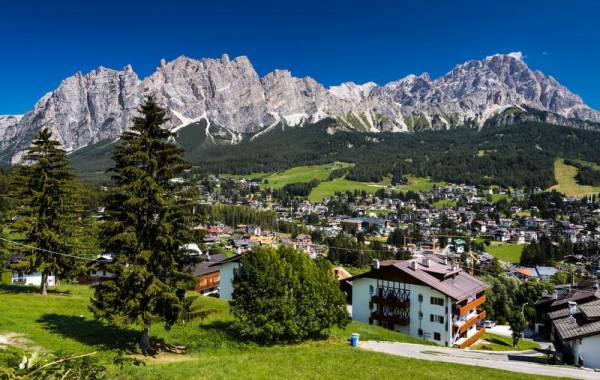
Cortina d’Ampezzo, © Can Stock Photo / emicristea
Lagazuoi & Cinque Torri
When you visit Cortina d’Ampezzo, don’t miss out on the cable car to Lagazuoi and the chairlift to Cinque Torri (the 5 towers), which are 5 minutes apart and just 20 minutes west of Cortina. Caves dug out during World War I form a maze underneath the rifugio at Lagazuoi. You will need a flashlight and some energy to reach the cave entrances which are between the top and bottom gondola stations.
You can reach Cinque Torri from a small chairlift at the parking lot on the main road between Lagazuoi and Cortina. The short chairlift ride takes you to Rifugio Scoiattol, right beside the towers. Cinque Torri has an open air museum of World War I trenches and store rooms scattered among the towers. From Cinque Torri, take a short hike up to Rifugio Averau and then a short, steep incline to reach Rifugio Nuvolau perched on a cliff top. Alternately hike down from Rifugio Averau to an awesome view of Ra Gusela at Passo Giau.
Tre Cime di Lavaredo
Tre Cime di Lavaredo (Drei Zinnen, the three towers of Lavaredo) is one of the most popular hikes in the Dolomites. The three towers are about a 45 minute drive from Cortina d’Ampezzo. You will pay about 30 Euros to enter the parking, but it’s worth it to avoid the 3 mile hike uphill from the entrance gate to the parking lot. You can hike a full circle around the towers. The trails are very wide and not exposed to heights, but they are also extremely crowded during the summer. Plan to spend about 4 hours hiking and enjoying the views on your full circle tour around Tre Cime.
You will find four rifugios to stop at along the way, starting with Rifugio Auronzo at the parking lot. Heading counter-clockwise as most people do, stop for a bite to eat at Rifugio Lavaredo or on the back side of the towers at the Dreizinnenhütte. As you near completion of a counter-clockwise circuit, you still have a chance for a strudel at Malga Longalm. Plan a full day to truly enjoy Tre Cime di Lavaredo.
More adventurous hikers can also head south from the parking lot for about 45 minutes to reach the extremely steep cliff edges facing the fabulous view of Cadini di Misurina. These peaks are also visible at a distance from the Tre Cime di Lavaedo trail for those who want to skip an Instagram posting from the white knuckle promontory overlooking Cadini di Misurina.
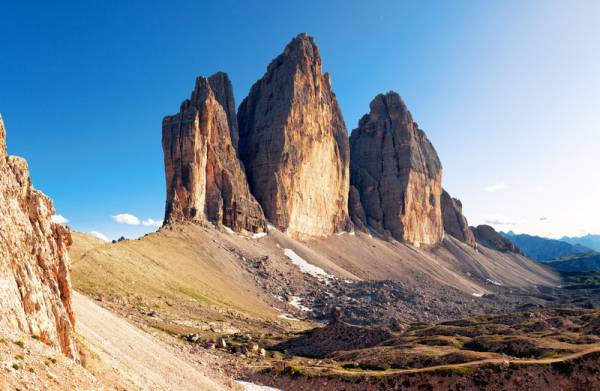
Tre Cime di Lavaredo, © Can Stock / frantysek
Croda da Lago
Croda da Lago literally means “rock of the lake” and refers to the spine of mountains just east of Cinque Torri. Most hikers start from the roadside parking at Ponte di Rocurto about 20 minutes southwest of Cortina d’Ampezzo on the road to Passo Giau. Take trail #437 at Ponte di Rocurto. At the first trail intersection, you have the option to take #434 clockwise direct to the lake & refugio or counter-clockwise on the harder, longer #435/436 route.
You can reach the Rifugio Croda da Lago at Lago Federa on #434 in just under 2 hours. Along the way is one nice viewpoint of Avereau, Lagazuoi, Tofana di Rozes, Croda Rossa, Cristallo, the Cortina Valley & even Tre Cime. Hike a little up hill after the rifugio to ensure you see Tre Cime more clearly, plus Sorapis, Antelao and more of the Cortina Valley. If you take the #435/436 route, your more difficult climb will be rewarded with views of Civetta and Pelmo plus the opportunity to visit the Mondeval Mesolithic burial site.
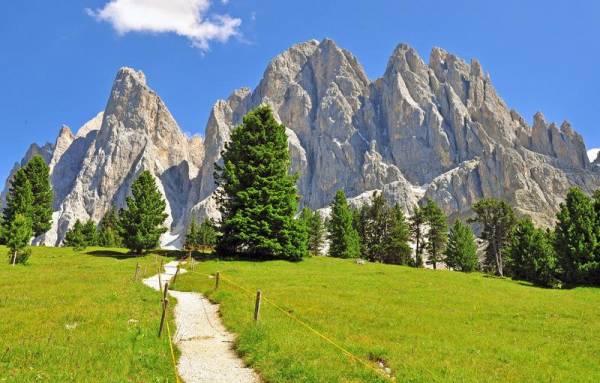
Geisleralm, Val di Funes © Can Stock / Krasnevsky
Val di Funes (Villnoss)
Val di Funes is about an hour from Val Gardena. In this valley you will get one of the classic Dolomites views by hiking the hillside above St Maddalena Church where the peaks form a backdrop. Parking is mainly small pay lots including one at the visitor centre & at Parkplatz Putzen. From two very small lots at Ranui, you can get to the other popular Dolomite pic of St John’s Church. You can pay to visit St John’s.
Geisleralm – To get close to the peaks in Val di Funes, drive 10 minutes from the village to the parking lot at Zanser Alm. Hike the Adolf Munkel Loop trail #35 for 3 hours return and visit the alpine meadow at Geisleralm. The route includes the rifugios at Gschnagenhardt, Geisler and Dussler. At noon it’s a challenge to see the peaks against the sun at Geisleralm meadow and it’s even more challenging to get to the head of the line for food at the rifugios. So, try to arrive very early or very late in the day.
Alternate for Val di Funes
Another way to reach a great viewpoint of the peaks at Val di Funes is to take the Resciesa Funicular from Ortisei and then hike for an hour to Rifugio Malga Brogles. The views are similar to Geisleralm. You can also look up at the hikers on Seceda gazing down at you. The Rifugio Malga Brogles hike is probably better late in the day when the sun catches the peaks at a better angle. During your hike, you also get great views of Sassolungo, Marmolada, the Sella group and Alpe di Siusi. If you aren’t up to the 2 hour return hike, you can simply visit Chalet Resciesa for a meal with a great view right at the top of the funicular.
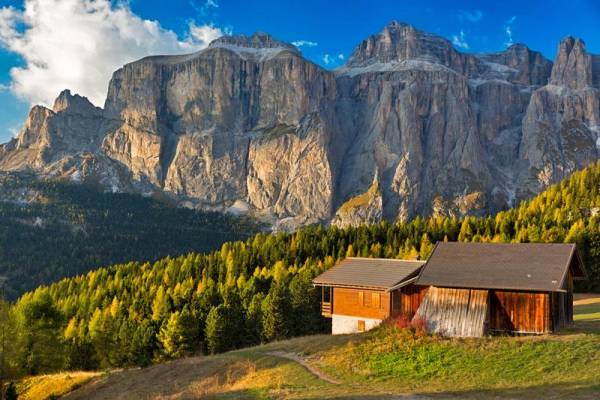
Pordoi Pass, Sella Group, © Can Stock / fisfra
Visit the Dolomites – Chairlifts and Gondolas
Dolomiti Super Summer is a great source for information on the many tickets for chairlifts and gondolas when you visit the Dolomites. Locals often refer to the Dolomites as the Südtirol, which translates to the South Tyrol. Each valley has passes with different combinations of days that can be purchased. Valleys don’t overlap their tickets, so if you take a gondola from Ortisei to the Alpe di Siusi, you’ll need a different valley pass if you descend to Kastelruth on your return trip.
In winter you can buy a Super Dolomiti pass and ski the Sella Ronda, which makes a full circle ski route through all the passes around the Sella Group. The Sella Ronda route takes you over Gardena Pass, Sella Pass, Pordoi Pass and also to the towns of Corvara and Arabba.
The Val Gardena web site offers a great pdf file showing all the chairlifts and gondolas in their valley. The Dolomiti Super Summer site at dolomitisuperski.com has maps of many areas too.
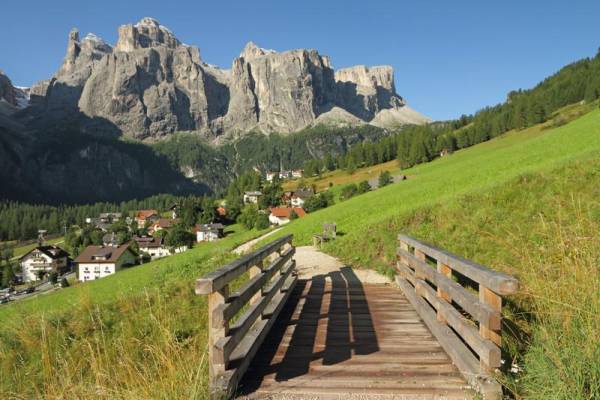
Sella Group, Colfosco, © Can Stock / mkistryn
Visit the Dolomites – Lago di Braies
Lago di Braies (Pragser Wildsee in German) is the most photographed spot in the Dolomites. The glacial blue lake waters, the back drop of mountain peaks and the picturesque rental row boats make this one of the most popular destinations in the Dolomites. You can walk completely around the lake in 1 – 2 hours or take an expensive row boat out on to the lake. You will find a large pay parking behind the waterfront hotel. The hotel, the boathouse and a small church are the only buildings you will see during your visit. At the far end of the lake, the Alta Via 1 hiking route climbs out of the valley on day 1 of its 10 day route southbound across the Dolomites.
Lago di Braies is 15 minutes from Niederdorf, 25 minutes from the Platzwiese valley, 1 hour from Cortina and 1.5 hours from Ortisei. Get there early to avoid the crowds and find parking.
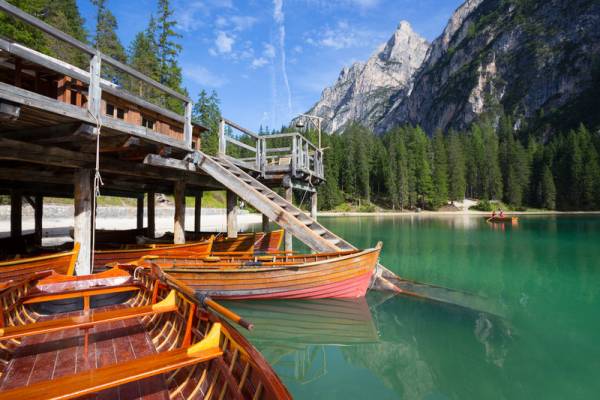
Lago di Braies, © Can Stock / azgek
Platzwiese Valley
When you visit Lago di Braies, consider adding on 25 minutes to reach the Platzwiese valley. No cars are allowed in the Platzwiese valley during its busy summer season, so you will need to park at the gate at Alpin Natur Hotel Brückele and take the #443 bus to Rifugio Prato Piazza. During the off season you can drive all the way to the valley. From Rifugio Prato Piazza make a 3 hour return hike through the valley to the Monte Specie viewpoint. You will get a great view of Tre Cime, Croda Rossa, Piz Popena & Monte Cristalo. Stop at Rifugio Vallandro or Almhutte Platzwiese for a meal along the way. See the World War I ruins beside the Rifugio Vallandro.
A great way to visit the Platzwiese and Lago di Braies is by staying in the Puster Valley at one of the small towns like Toblach (Dobbiaco) or Niederdorf (Villabassa). These towns have many hotels catering to summer tourists, plus you will find lots of B&B hobby farms called “agriturismo”. Niederdorf is about 15 minutes from Lago di Braies and 25 minutes from the Platzwiese valley.
Marmolada
Head to Malga Ciapela on a day trip from Val di Fassa, Val Gardena or Cortina d’Ampezzo to reach the top of Marmolada and its glacier. The three gondolas from Malga Ciapela increase your elevation by 6,200 feet to a height of 10,700 feet. Marmolada is the highest peak in the eastern Dolomites. In winter you can ski all the way back down.
From the gondola summit at Punta Rocca the viewing platform looks straight down into the chasm on the south side. To the south is the largest massif in the Dolomites, the Pala Group at Pale di San Martino. To the west is the Catinaccio range and Sassolungo. Nearby is the Sella Group. Plus you can see Civetta, Pelmo, Sorapis, Tofana di Rozes, Lagazuoi, and Croda da Lago.
Visit the Dolomites – Other Valleys
- Fodom Valley (Livinallongo Valley) is on the Great Dolomite Road at the base of the Sella Group. The Fodom valley is located between Pordoi Pass and Falzarego Pass and includes the village of Arabba. The area is another premier ski area of the Dolomites and is part of the Sella Ronda ski circle.
- Alta Badia – The Alta Badia is next to the Gardena Valley and just off the Great Dolomite Road. The Alta Badia includes several small villages with a strong Ladin heritage, including Corvara and Colfosco. There are numerous chairlifts and gondolas for hiking and skiing in the Alta Badia. The Alta Badia is part of the Sella Ronda ski circle around the Sella Group.
Bolzano (Bozen)
Bolzano (Bozen) marks the western edge of the Great Dolomite Road. The town is home to Otzi the Ice Man at the South Tyrol Archaeology Museum. This 5,300 year old mummy was discovered in 1998, frozen in the ice of the Dolomites. Bolzano has excellent train access from Verona and Innsbruck, but a rental car will be necessary to travel to the popular sites in the Dolomites.
Weather in the Dolomites
The weather in the Dolomites creates two separate tourist seasons. Chairlifts and gondolas are filled with skiers in the winter. In the summer the alpine hikers take over, but some lifts don’t operate then. During spring and fall, the tourists abandon the area and the lifts do not operate. The best alpine months are July and August, but these are also the busiest. So, September can be a good month for alpine hiking and trekking. Precipitation is highest in the summer, which makes a short visit a gamble for good weather in the Dolomites.
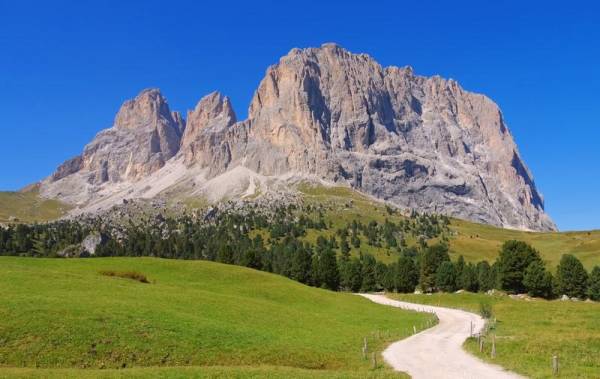
Langkofel or Sassolungo, © Can Stock / LianeM
Once the ski lifts open in winter, the valleys in the Dolomites are even busier than in the summer. Expect summer highs in July and August of 70 F (21 C) and lows of 50 F (10 C). Average winter highs in November and December are 32 F (0 C) and lows average 18 F (-8 C). The deciding factor in a visit will not be the weather in the Dolomites, but the availability of accommodation.
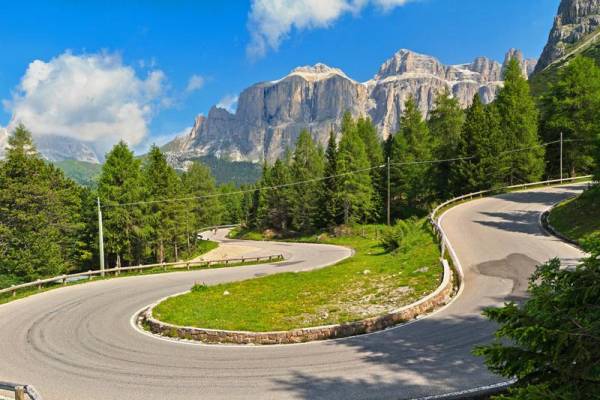
Pordoi Pass Twisting Road, © Can Stock / Antonio_S
Get to the Dolomites
You will find it is a bit of a challenge to get to the Dolomites, but that’s part of the charm when you visit the Dolomites. The Great Dolomite Road runs from Bolzano to Cortina d’Ampezzo. The road twists and turns over multiple passes, which makes it a popular route for motorcycles and private vehicles. Smaller public buses travel the valleys and passes, but large tour buses and trains are not a travel option through the region. You really need to rent a car to visit destinations in the Dolomites.
From the west, regular train service to Bolzano (Bozen) arrives from Innsbruck in Austria to the north and Verano in Italy to the south. At the eastern end of the Great Dolomite Road, Cortina d’Ampezzo is 45 minutes from the train station at Calalzo di Cadore. So, a rental car obtained in Venice, Milan, Bolzano or Innsbruck is the best bet to visit the Dolomites.
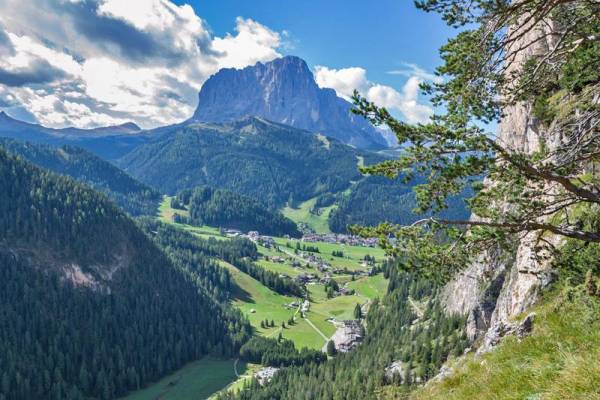
Selva, Val Gardena, © Can Stock / enricolapponi
Once you reach a valley in the Dolomites, tourist association members provide free bus passes that frequent all the cable car gondola stations. You can hike and then often return by alternate gondolas and alternate bus routes. You can easily spend a week exploring and hiking a single valley without the need of a vehicle.
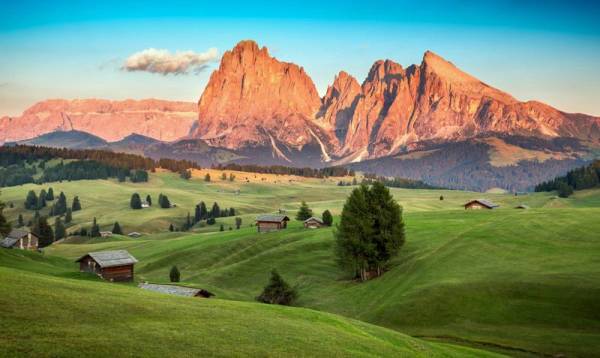
Alpe di Siusi, © Can Stock / fisfra
Languages of the Dolomites
The Italian Alps became part of Italy after fierce battles with Austria in World War I. Italian and German are both official languages in the Dolomite area, but locally Ladin (not Latin) is spoken in many valleys. Tourists seem to opt for the name that’s easier to say, regardless of language. It is easy to get confused by the languages of the Dolomites. Here are some common local places, which all mean the same thing:
- Bolzano, Bozen, Balsan
- Alpe di Siusi, Seiser Alm, Mont Seuc
- Kastelruth, Castelrotto, Ciastel
- Gardena Valley, Val Gardena, Groden, Gherdeina
- Ortisei, Sankt Ulrich, Urtijei
- Sassolungo, Langkofel, Saslonch
- Fassa Valley, Val di Fassa, Fassatal, Val de Fascia
- Cortina, Cortina d’Ampezzo, Hayden, Anpezo
- Sella Pass, Passo Sella, Sellajoch, Jeuf de Sela
- Funes Valley, Val di Funes, Villnoss, Villnosstal
Visit the Dolomites – Great Dolomite Road
The 5 main valleys of the Dolomites are Val Gardena, Alta Badia, Cortina d’Ampezzo, Fodom and Val di Fassa. The Great Dolomite Road traverses the most popular section of the Dolomites limestone formation. Heading east from Bolzano, the route takes travelers through the Fassa Valley, over Pordoi Pass and on to Cortina d’Ampezzo. An alternate route travels through the popular Gardena Valley and the towns of Kastelruth, Ortisei, Santa Cristina and Selva. From the Gardena Valley you have the option to continue over the Gardena pass to the Alta Badia Valley or rejoin the Great Dolomite Road over the Sella Pass.

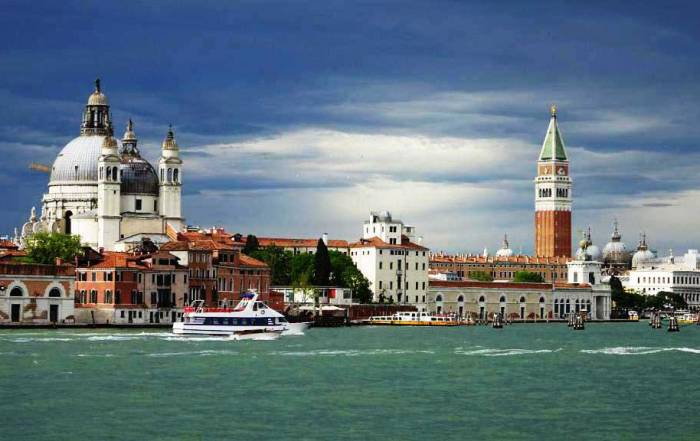
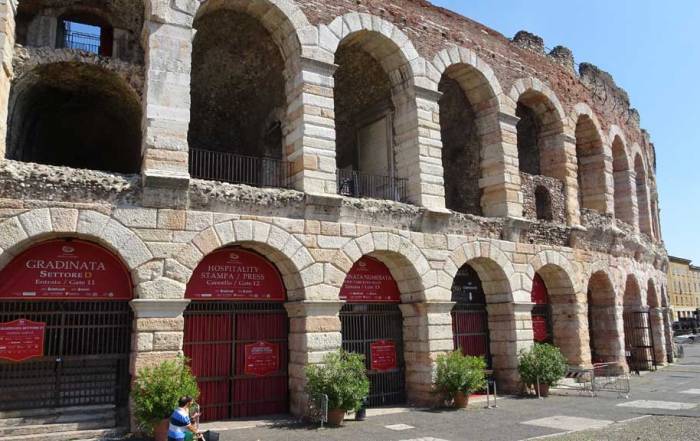
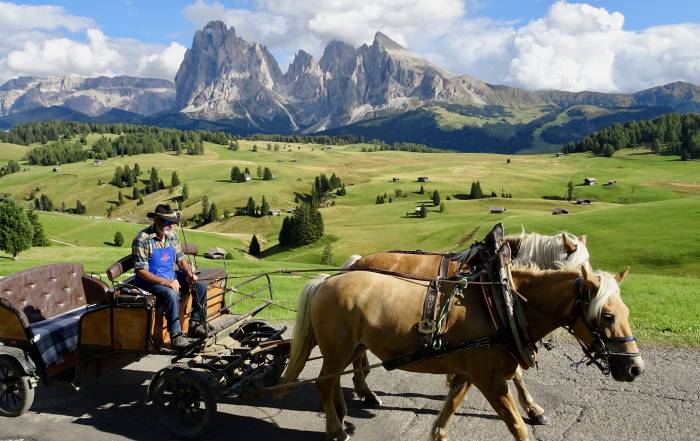
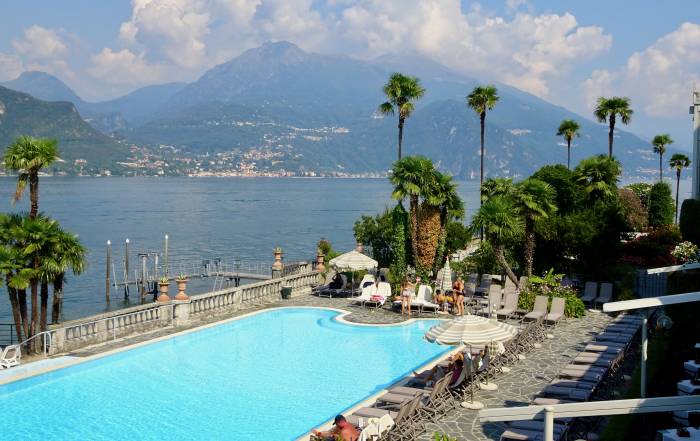
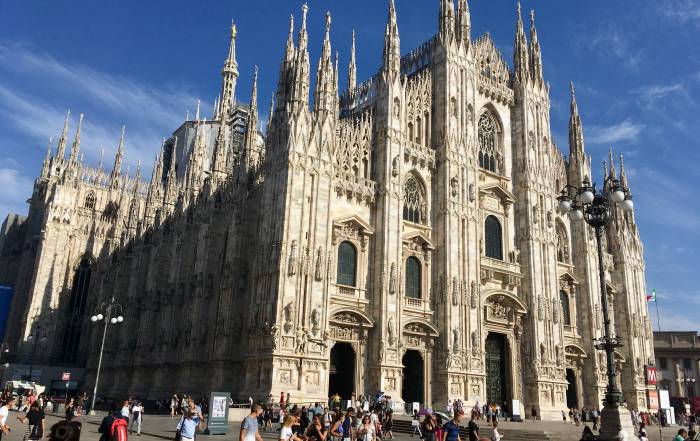
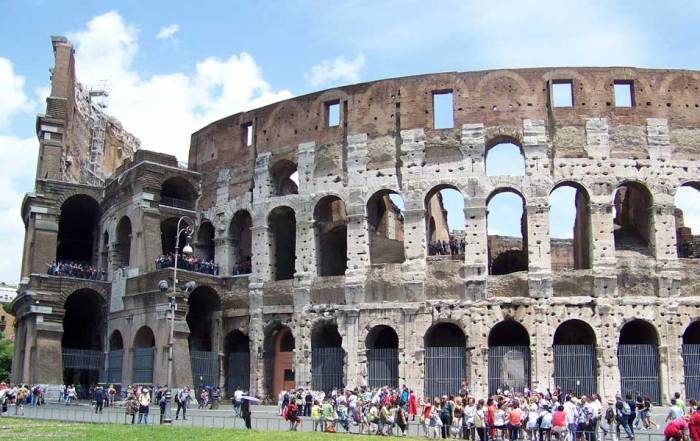
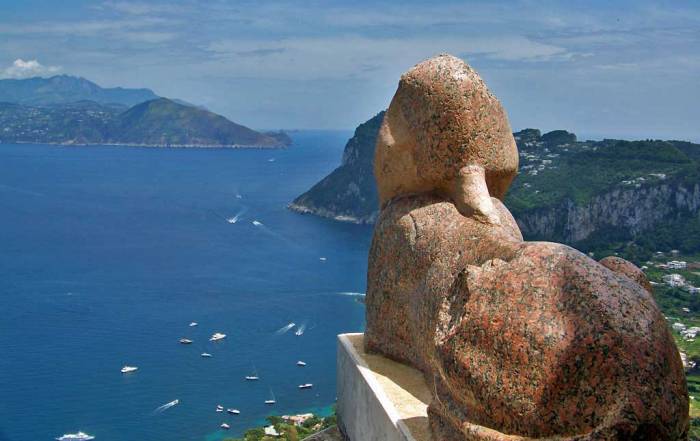
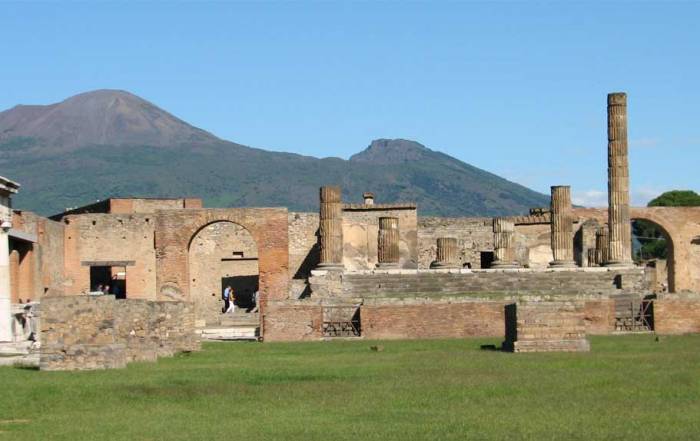
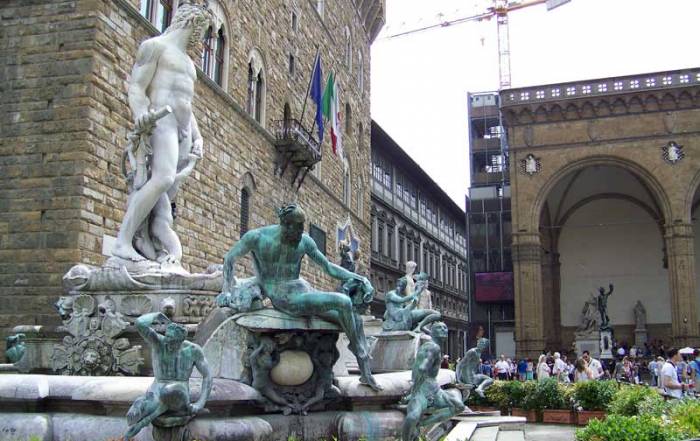
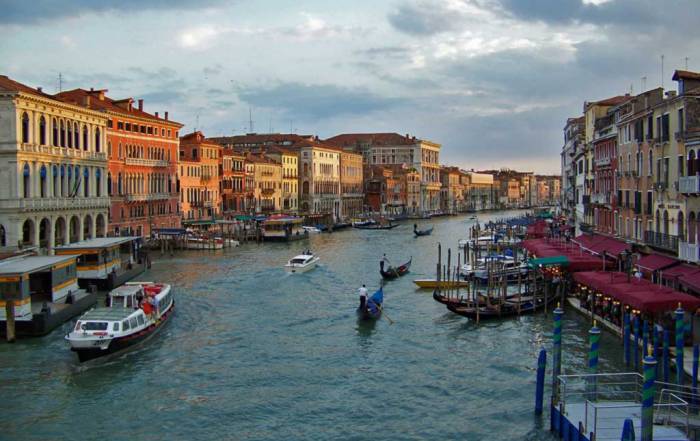
Leave A Comment